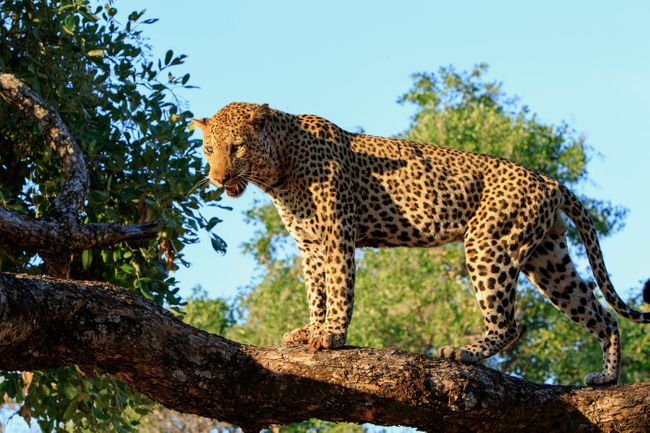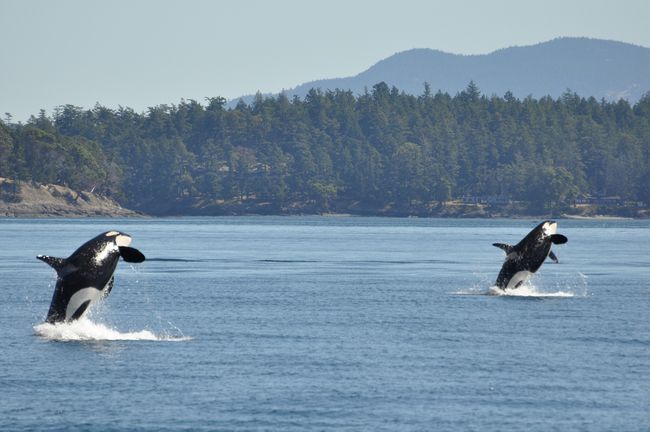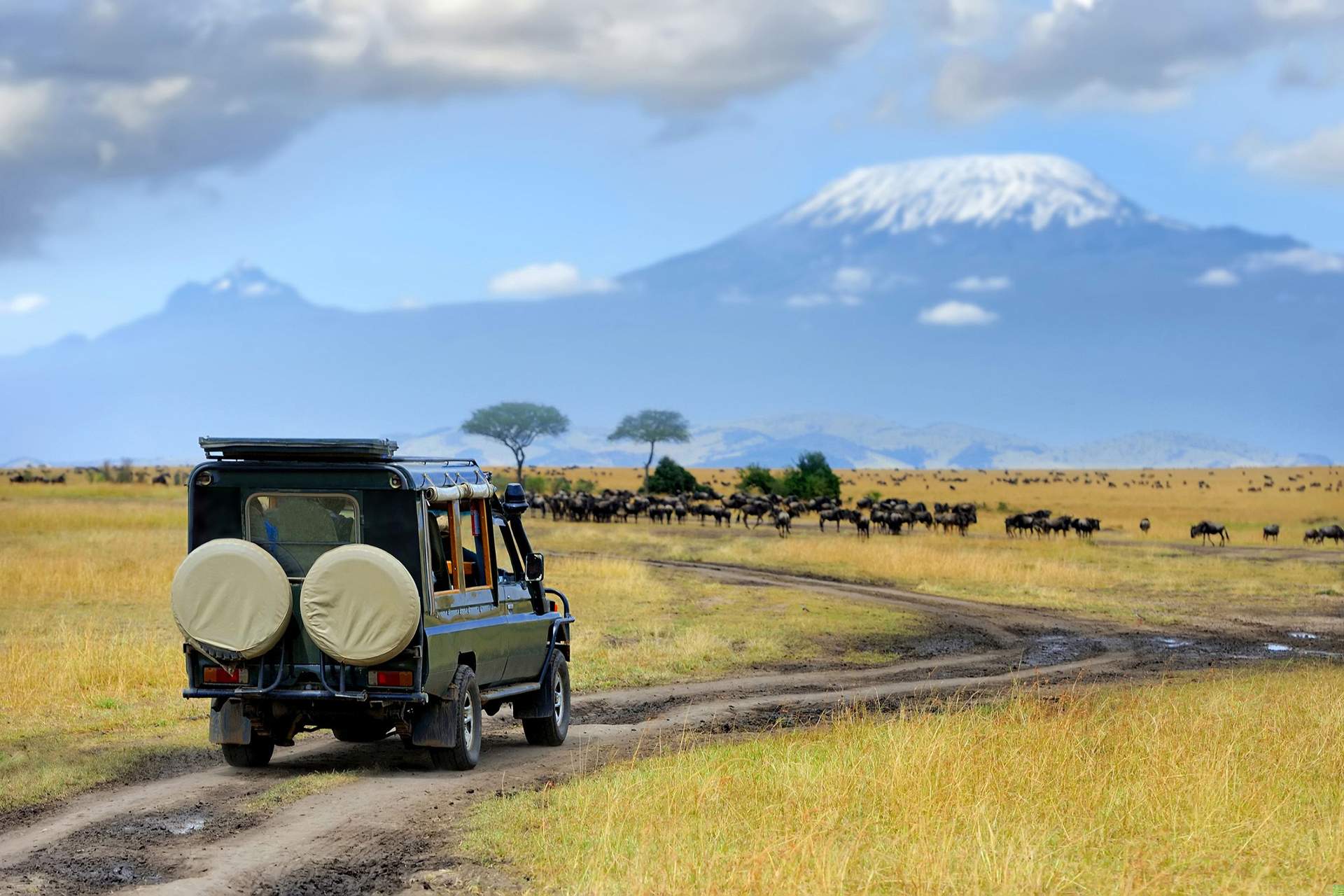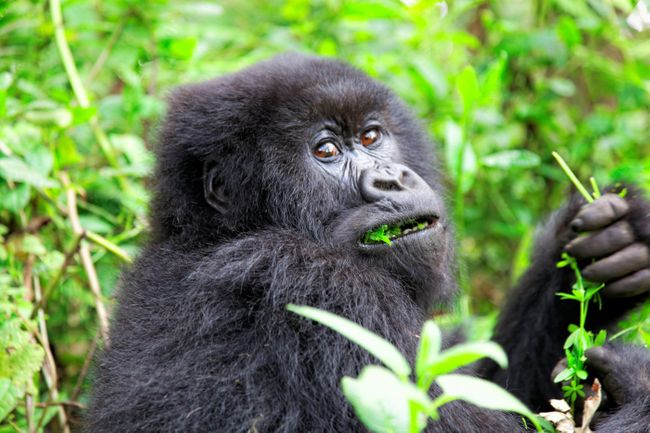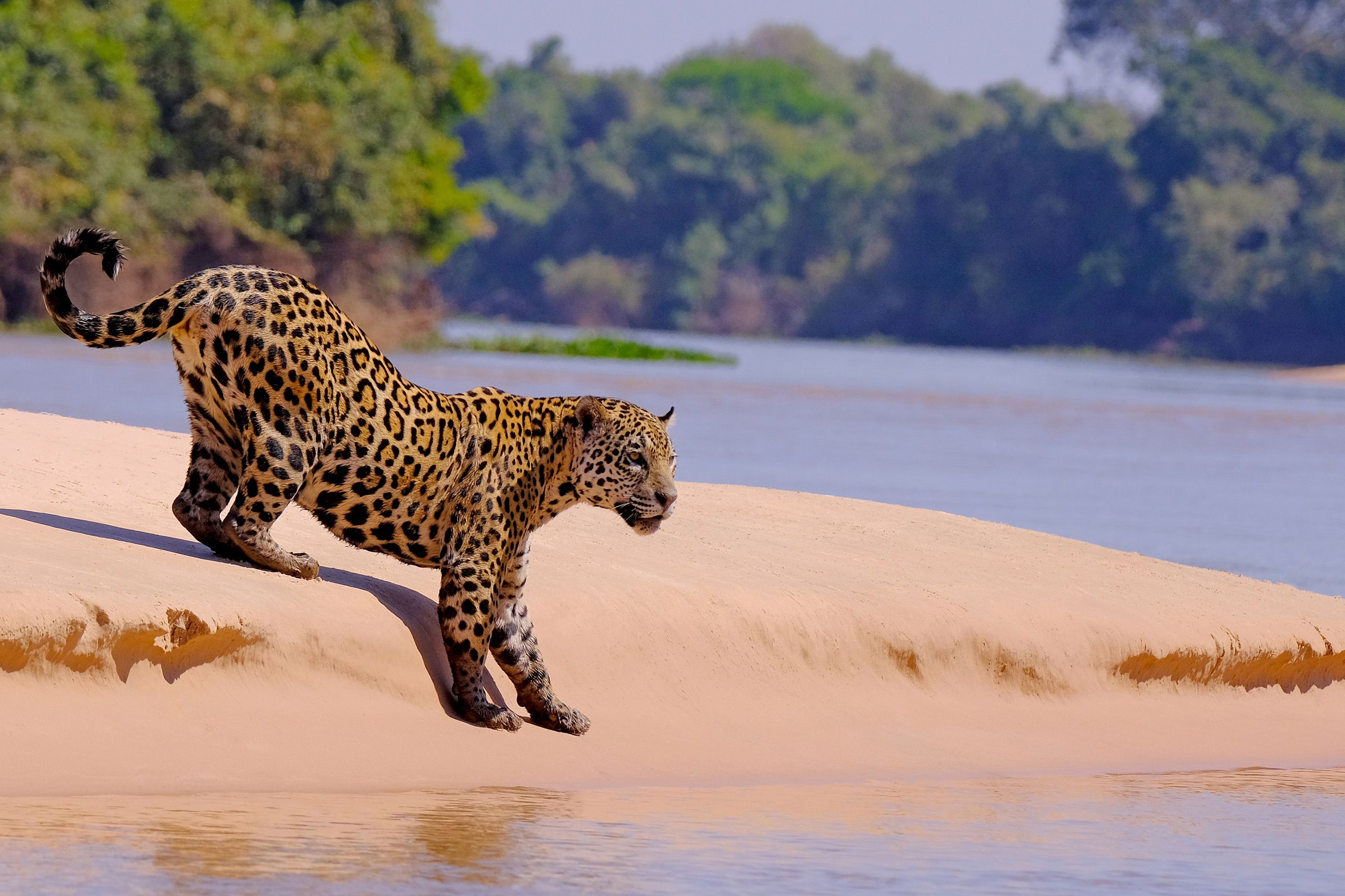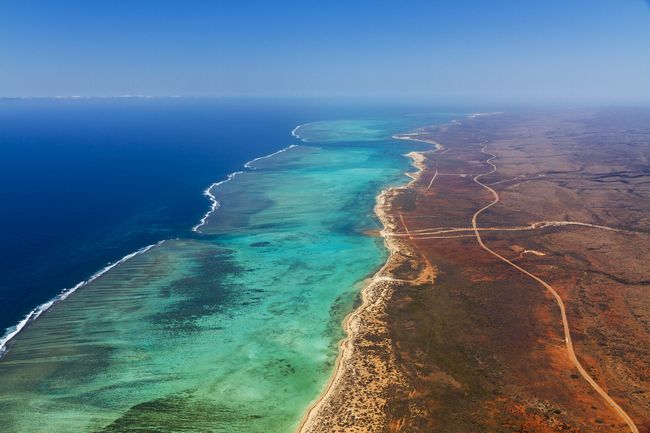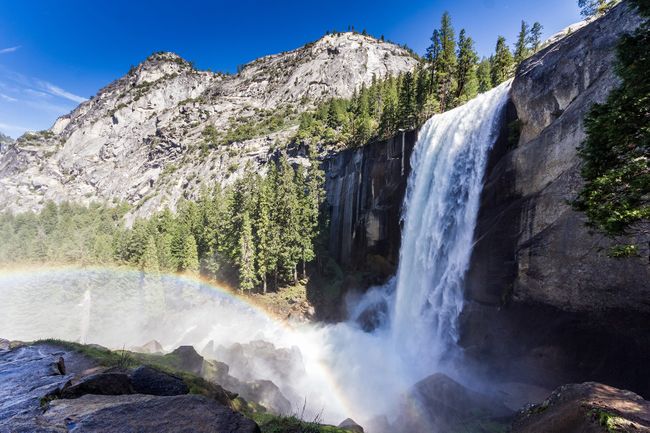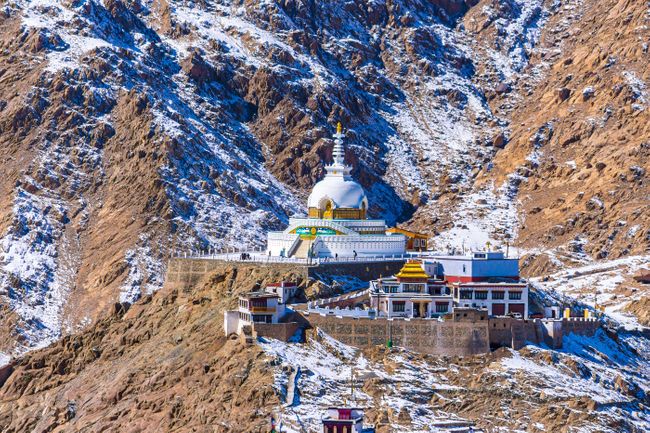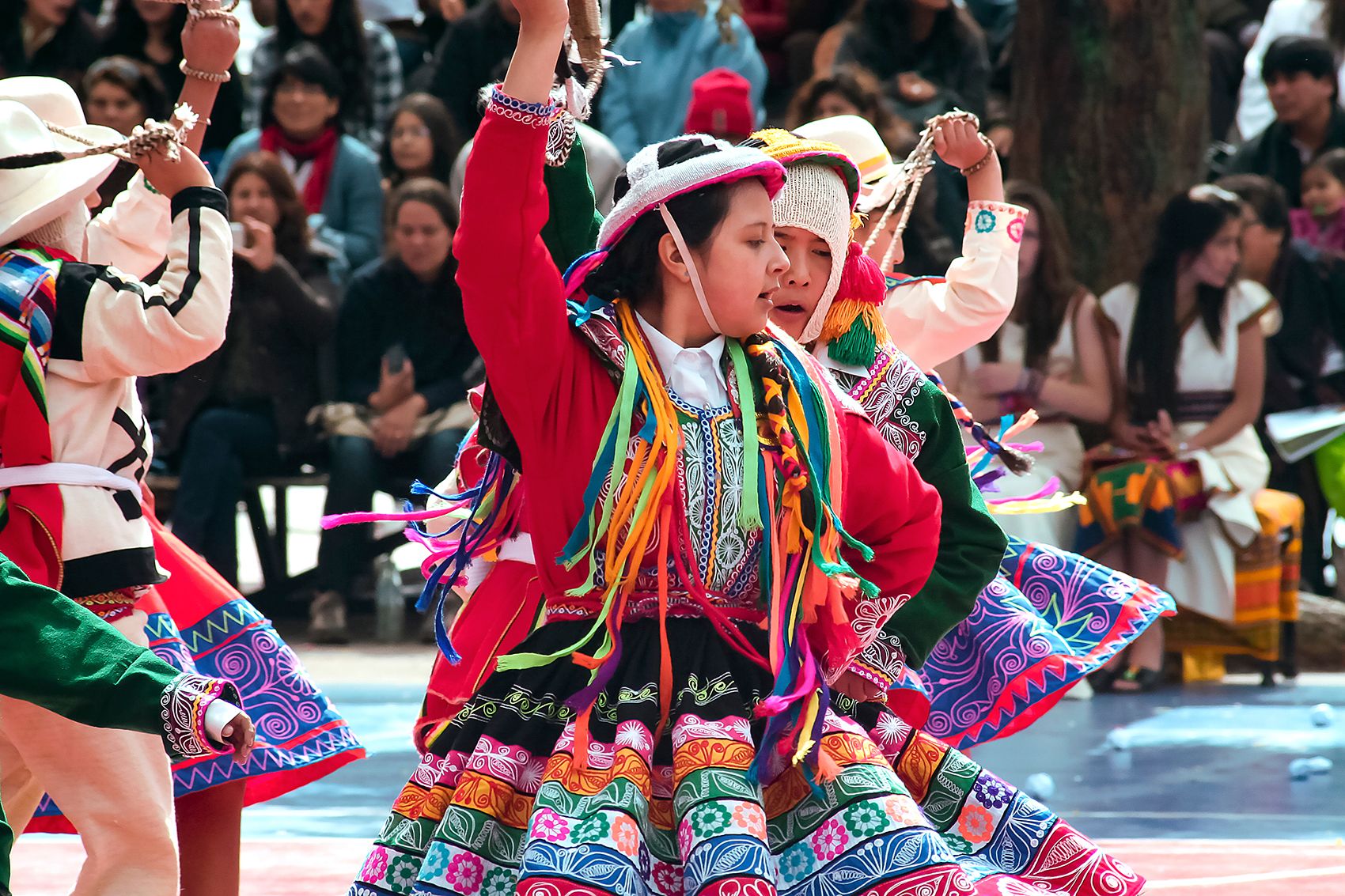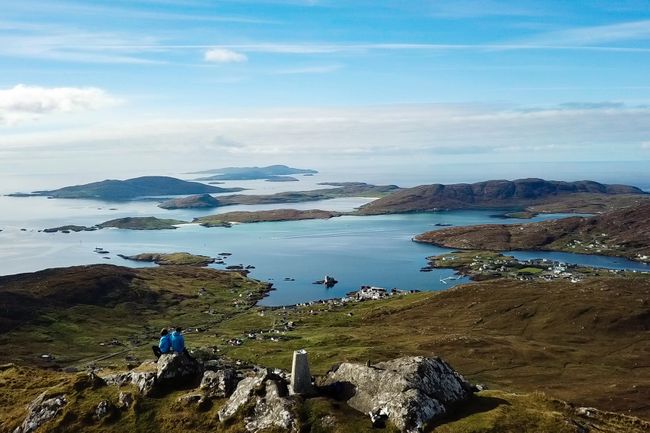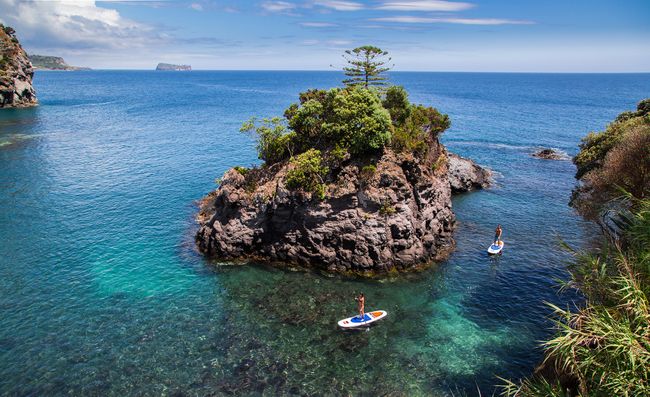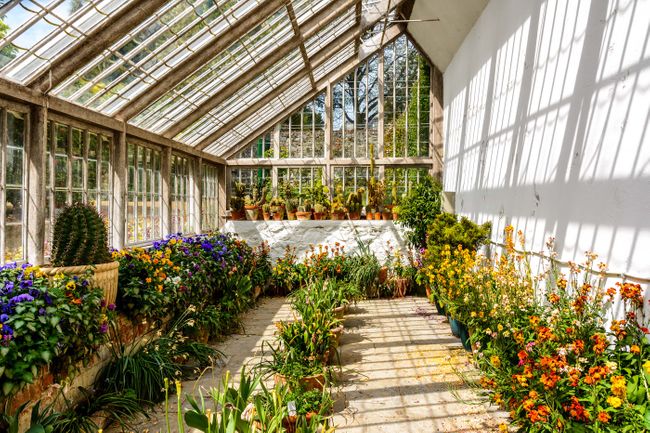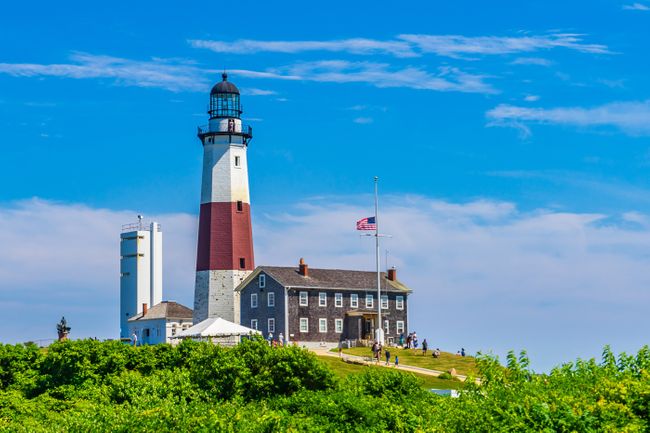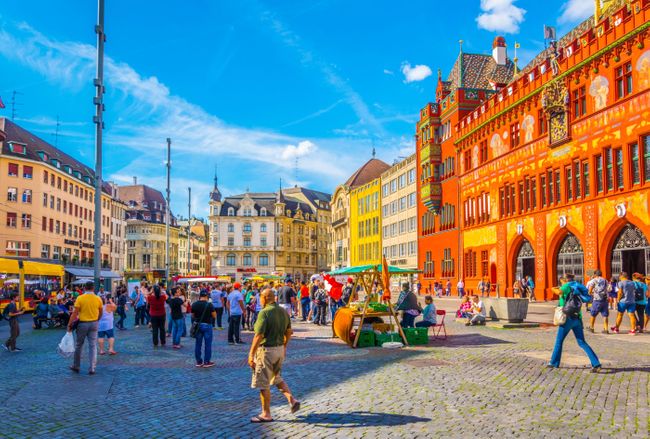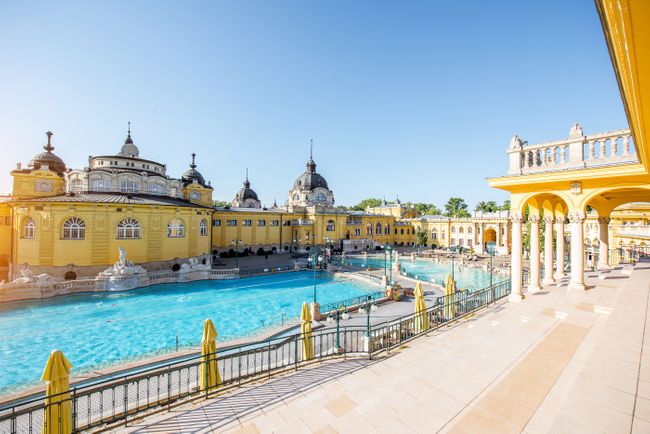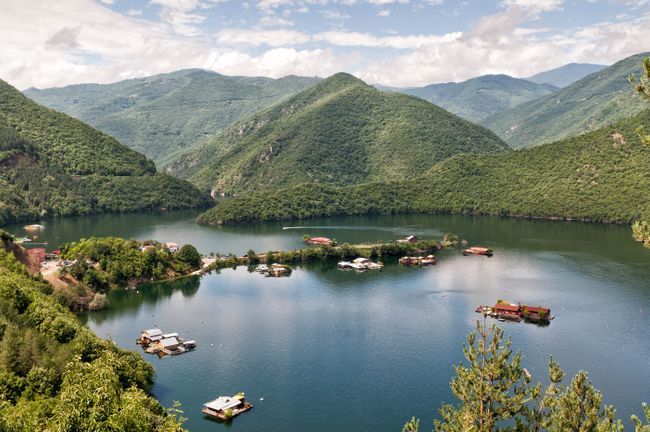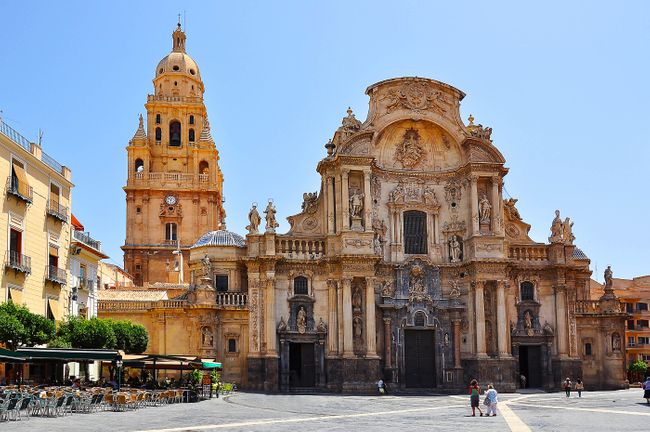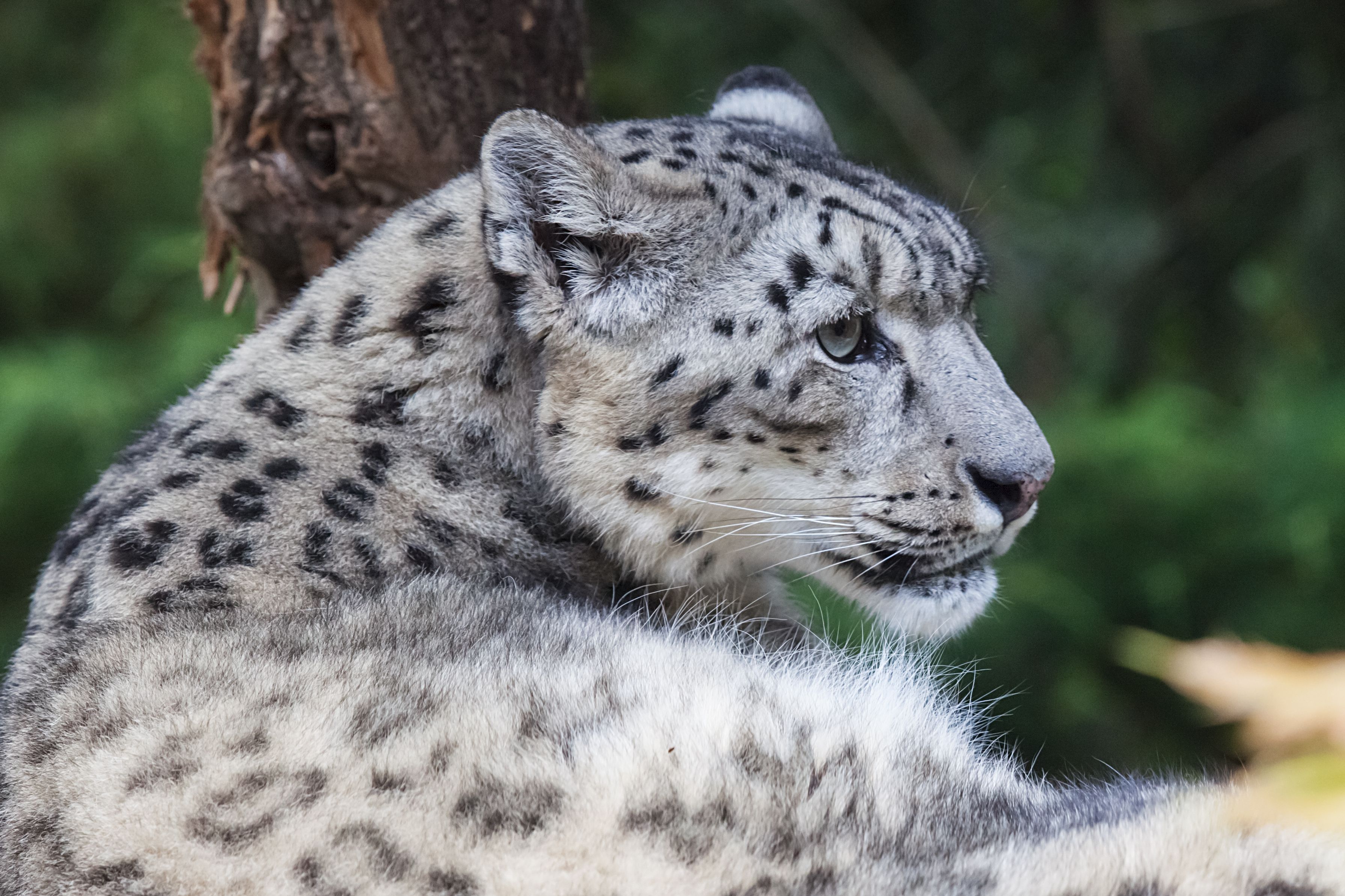Safari means ‘long journey’ in Swahili. Today, safari-goers can bypass the arduous up-country trek of yesteryear and be deep in the African bush within 24 hours of Heathrow. Nonetheless, that earlier, romanticised era of Blixen and Hemingway retains its allure.
So, with half a continent at your disposal, where do you start? Should it be the endless plains of Tanzania’s Serengeti or the hidden waterways of Botswana’s Okavango? Would you rather sit back and enjoy the spectacle of wildebeest herds sweeping across open savannah? Or are you, perhaps, the more active type, who dreams of paddling past lazing crocodiles or tailing a pride of lions on foot?
Your choice of safari comes down partly to the wildlife. For most first-timers, the ‘Big Five’ top the wish list – for the uninitiated, that’s lion, leopard, buffalo, elephant and rhino, so named because they were once considered the hunter’s most dangerous adversaries. Many places boast all or most of these, but some offer better odds than others. Then there are the equally iconic giraffes, zebras and hippos – not forgetting the fascinating smaller stuff, from chameleons and dung beetles to meerkats and hornbills.
The good news is that – at least in general wildlife terms – you can’t really go wrong. Whilst each destination has both its specials and its absentees (no point looking for springbok in the Serengeti, for instance, or cheetahs in Luangwa), the sheer richness and variety at almost any one of them, and the grandeur of the African backdrop, is bound to blow you away.
Skip ahead:
These safaris get you straight to Africa’s best-known wildlife, including most of the Big Five, and needn’t break the bank in the process.
1. Masai Mara, Kenya

Masai Mara, Kenya. (Dreamstime)
Picture just one safari destination and chances are it’s this one – if only because many a TV documentary has made Kenya’s teeming savannahs, flat-topped acacias and lazing predators emblematic of a continent.
The Masai Mara is a northern extension of Tanzania’s Serengeti, and the huge herds of wildebeest and other grazers that arrive from July to October dominate the park’s ecology in a similar way. This jaw-dropping spectacle is a magnet for predators; there is no better place to notch up lion and cheetah in double-quick time, helped by the open terrain and the cats’ ease around vehicles. Other draw-cards include elephant, giraffe and rare black rhinos.
The Mara’s downside is its popularity, sometimes leading to intrusive clusters of minibuses. For a more exclusive experience, head to upmarket camps in the west. Rough roads and seasonal flooding rule out self-drive for first-timers.
Budget: Options at all price levels
When to go: Cooler and more accessible during dry season, May-Oct
2. Serengeti National Park and Ngorongoro Crater, Tanzania

Ngorongoro Crater, Tanzania. (Dreamstime)
The Serengeti is arguably the best-known wildlife spectacle on the planet. Everything that applies to the Masai Mara – its northern extension – applies here, from the scale of the great migration to the ease of sighting predators. Except that the Serengeti, at nearly 15,000 sq km, is nearly ten times bigger, which means that its plains are that much more ‘endless’ and there is a greater habitat variety. It also means that visitors are a little thinner on the ground than in the Mara. The centre of the park, around Seronera, is often busy but private concessions in the north and west offer more exclusive options.
Ngorongoro Crater sits a short drive to the east, still within the Serengeti Conservation Area. This volcanic caldera encloses 250 sq km of plains, forest and lakes, and harbours an improbable concentration of wildlife – including lions, elephants and black rhinos. Such riches draw the crowds, and the place can sometimes seem like a wild zoo. But should your lifetime’s safari-going be confined to a single day-trip, then it should probably be here.
Budget: Options at all price levels
When to go: Year round; migration moves with the seasons; conditions best Jun-Oct
3. Kruger National Park, South Africa

Kruger National Park, South Africa. (Dreamstime)
Some purists argue that South Africa’s premier national park is too crowded and managed. Certainly, its tar roads and large camps are not to everybody’s taste. But its 22,000 sq km mean room for all comers, with enough backroads and bush camps to satisfy those with serious wilderness cravings.
Whatever your tastes, there’s no denying the wildlife. With the Big Five (including both rhino species) all thriving, plus cheetah, wild dog, numerous large herbivores and 500-plus bird species, you will see a huge selection here. The secret is the habitat variety, from hills and savannah to woodland and riverine forest. Abundant water helps, with perennial rivers ensuring game concentrations year round. All-weather roads also make this a top bet for the rainy season.
The upside of development is choice. From exclusive lodge to large public camp, and from night drive to wilderness trail, Kruger really does offer everything. First-timers and budget travellers will probably find this Africa’s easiest and most rewarding safari destination.
Budget: Options at all price levels
When to go: Year round; main rains Nov-Mar
4. Chobe National Park & Moremi Game Reserve Botswana

Chobe National Park, Botswana. (Dreamstime)
Botswana is a dry land yet, paradoxically, some of its best game viewing is by water. Come the dry season, wildlife throngs the riverfront in the far north of Chobe National Park, where boat cruises pass countless elephants and buffaloes. Lions and hyenas roam the loop roads, while sable are among the many herbivores. Victoria Falls is just a day-trip away.
Further south, the Moremi Reserve protects the eastern fringes of the Okavango Delta, where seasonal waterways lure prolific game numbers from the surrounding mopane woodland. Predators, including wild dog, are abundant. Boat cruises across the lagoons or mokoro (dugout canoe) trips down the narrow channels offer plentiful big game and bird life.
These two destinations are often combined, transferring either by air or an arduous road trip – the latter via Savuti, famed for elephants, lions and hyenas. Both can be crowded in peak season. Self-drive is only for the experienced but there are budget mobile packages (using government campsites), plus numerous lodges.
Budget: All price levels
When to go: Jun-Oct (peak Okavango floods May-Aug)
5. South Luangwa National Park, Zambia

South Luangwa National Park, Zambia. (Dreamstime)
Zambia’s top park is generally seen as a destination for the more discerning, thanks to its expert guiding and small, owner-run lodges promoting an all-round bush experience.Nonetheless, South Luangwa is also a top spot for first-timers. Toward the end of the dry season game concentrates in great numbers around the shrinking river and its hippo-choked lagoons, and – with the exception of rhino and cheetah – you can expect easy viewing of a full wildlife spectrum. Night drives allow the thrill of following big cats on the prowl – there is no better park for leopard – while guided walks offer an enthralling ground-level insight into the bush. Indeed, this park is known as the home of the walking safari.
This is a challenging destination for the independent traveller – more high-end lodge territory. But you can expect an excellent all-round safari for your money, with top wildlife, attention to detail and raw bush appeal.
Budget: Medium / High
When to go: Peak game viewing Jun-Oct; floods during rains (Nov-Mar), when some camps close
6. Etosha National Park, Namibia

Etosha National Park, Namibia. (Dreamstime)
Etosha is Namibia’s Kruger, with roads and facilities suitable for the self-drive, budget safari. The harsh, semi-arid terrain is not to all tastes, though, with its thorn scrub, calcrete rubble and vast, shimmering saltpan. And with no rivers, you can forget about hippos and crocs.
The best ploy here is to stake out one of the park’s many spring-fed waterholes and wait for animals to arrive. The end of the dry season sucks a procession of thirsty game from the parched bush. Zebra, giraffe, oryx and others all jostle for position, giving way to boisterous elephant herds and cantankerous black rhinos. Lion prides lurk in ambush.
Each public camp overlooks a busy waterhole, floodlit by night, so during the dry season you need never leave camp. The rainy season brings lush growth and flamingos flocking to temporary lagoons. A number of private concessions in the park’s southern and western reaches offer more upmarket guided safaris.
Budget: Options at all price levels
When to go: Peak game viewing Jun-Nov; pans flood Jan-Mar
With big game already under your belt, these safaris take you away from the crowds to relax and enjoy a fuller appreciation of the wildlife.
1. Mana Pools & Lower Zambezi National Park, Zimbabwe/Zambia

Mana Pools National Park, Zimbabwe. (Dreamstime)
The Zambezi River meanders east towards the Indian Ocean across a broad floodplain between towering escarpment walls. Come the dry season, the valley’s mosaic of islands, oxbows and river terraces fills up with wildlife: large herds of elephant and buffalo move down from the hills, while lion and other predators stalk prey along the river.
This picture-book panorama straddles two countries: on the Zambia side (north) it forms the Lower Zambezi National Park; on the Zimbabwe side it falls within the Mana Pools World Heritage site.
Absentees include rhino, wildebeest and giraffe – but this place is more about quality than quantity. The scenic backdrop invites you simply to sit and soak it all in – which is no bad strategy, when wildlife wanders through the riverside lodges at will.
Road access is rough and the emphasis, especially on the Zambian side, is on the upmarket. Activities include game drives and bush walks. This is Africa’s top canoeing destination: wildlife lines the banks and hippo pods lurk around every bend. Wilderness trails in Mana Pools are only for the adventurous.
Budget: Medium / High
When to go: Peak game viewing May-Oct; no road access to Mana Pools during rains (Nov-Apr), when many Zambian camps also close
2. Okavango private reserves, Botswana

Okavango private reserves, Botswana. (Dreamstime)
If a trip to Moremi has whetted your appetite for the Okavango, a number of private concessions offer a more exclusive window on this fabulous wildlife area. Each has its own attractions according to terrain – some more water-based than others. The reintroduction of both white and black rhinos means that the area now boasts the complete Big Five, while highlights include Africa’s best wild dog viewing and dramatic lion/buffalo interactions.
Access is almost entirely by air and many of the lodges are extremely swanky, with prices to match. Your money gets you fabulous locations, top guides, a glorious wilderness area pretty much to yourself and a chance to enjoy activities – such as walks, night drives and even elephant-back safaris– that are not available inside the national park.
Budget: High
When to go: Year round; peak game viewing Jul-Oct
3. Laikipia Plateau, Kenya

Masai scouts on safari. (Dreamstime)
The Laikipia Plateau lies at the southern boundary of Kenya’s northern frontier, with dramatic views of snow-capped Mt Kenya to the south. With similar wildlife to that in nearby parks of Meru, Samburu and Buffalo Springs, it comprises around a dozen private concessions, notably the Lewa Wildlife Conservancy, that have joined forces in one enormous conservation initiative. This protects one of Kenya’s healthiest wildlife populations, with elephant, buffalo and all the major predators in good numbers, plus reticulated giraffe, Grevy’s zebra and more than half the country’s black rhinos.
Laikipia offers an exclusive Kenya alternative to the Masai Mara; lodges – some very imaginative – tempt guests with everything from camel trekking to fishing. It has become a pioneering area for ecotourism, with many properties owned by the local community. The high altitude means that large areas are malaria-free and usually cooler than the Mara.
Budget: Medium / High
When to go: Year round; some lodges close with the ‘long rains’ (Nov-Mar)
4. Imfolozi Wilderness Trails, South Africa

Imfolozi Wilderness Trails, South Africa
Imfolozi is synonymous with white rhino and wilderness trails – it was here that Africa’s second-largest land mammal made its stand against extinction a century ago, and this is where conservationist Ian Player developed his wilderness trails concept, encouraging a more holistic appreciation of the wild.
Close encounters with white rhino are common as you tramp through the undulating bush. Black rhino also thrive, while elephant, buffalo and all major predators are present. But the trails are as much about appreciating tracks, birdsong, insects and plants as big-game thrills. Camping is basic, guiding outstanding and the total wilderness immersion memorable. The park is easily reached on good roads and the trails come at bargain KwaZulu-Natal Parks Board prices. Book in advance.
Budget: Low
When to go: Trails (2, 3 or 4-day) run mid-Feb to mid-Nov
5. Ruaha National Park, southern Tanzania

Ruaha National Park, southern Tanzania. (Dreamstime)
As Tanzania’s ‘southern circuit’ has developed in recent years, so this once obscure park has become a favourite. It offers classic big game in a remote setting, with the few camps spaced far apart.
Attractions include Tanzania’s largest elephant population, plus numerous buffalo and the full spectrum of large predators. Its geographical position between two biomes – the east African acacia savannahs and the southern African miombo woodland – means an unusual mix of species, including, for example, both greater and lesser kudu.
This reserve is often combined with a visit to Selous. Lodges are upmarket and access is generally by air. Game viewing is best during the dry season, when large herds gather around the rivers, though birding is excellent in the rainy season. Activities include both night drives and day walks in the company of expert guides.
Budget: Medium / High
When to go: Year round; some lodges close with the ‘long rains’ (Nov-Mar)
6. Queen Elizabeth National Park, Uganda

Queen Elizabeth National Park, Uganda. (Dreamstime)
Uganda is best known for its gorilla trekking and, with Kenya and Tanzania receiving most of East Africa’s safari visitors, its game parks are often overlooked. True, this park suffered heavily from poaching during the country’s recent turbulent years, but the wildlife has returned with astonishing speed.
Today elephant and buffalo once again roam the lakeshores, while hippos crowd the Kazinga Channel and the tree-climbing lions of Ishasha thrive on the abundant kob, waterbuck and other antelope.
While the first-timer is assured plentiful big game, the more experienced safari-goer will find that the unusual variety of habitats, for a relatively small park, offers an impressive diversity. This runs to chimpanzees in the forested gorges and rare shoebill in the papyrus swamps. The bird list of 610 species is exceptional by any standards. A full range of activities and accommodation is available, including boat cruises, and all beneath the backdrop of the Rwenzori Mountains.
Budget: Options at all price levels
When to go: Wettest months Apr-May and Oct-Nov, when some roads are impassable
These safaris are for those who’ve chalked up all the greatest hits and now want to go a step further, in search of unusual wildlife or a true wilderness experience…
1. Northern Damaraland, Namibia

Oryx in Northern Damaraland, Namibia. (Dreamstime)
The harsh, semi-desert landscape of Damaraland, in north-western Namibia, lies outside any national park. This is a land where the dramatic geology, ancient rock art and unique plant life are of as much interest as the wildlife. Nonetheless, a fair selection of game wanders the stony plains and sandy wastes, with pride of place going to the uniquely desert-adapted elephant and black rhinos.
Other highlights include giraffe, oryx, mountain zebra and the occasional predator, including cheetahs and rare brown hyenas.
A series of river valleys, generally dry, enables visitors to penetrate deep into the rugged terrain; a number of exclusive lodges offer safaris both on foot and by 4WD. You will not be ticking off a Kruger-style checklist of game, but expect an awe-inspiring dose of true wilderness, with the rare opportunity to track black rhino on foot and camp out under the stars.
Budget: High
When to go: May-Nov (camps closed during rains)
2. Katavi National Park, Tanzania

Hippopotami at Katavi National Park, Tanzania (Dreamstime)
Most parks in Africa push the ‘ultimate wilderness’ line, but this one is hard to beat, being so far off the beaten track – even by Tanzania’s standards – that only a few hundred visitors get there each year. Its terrain comprises mixed woodland and two huge grassy plains, where the herds congregate. The only permanent water sources are the Katuma and Kapapa Rivers, which heave with hippos in the dry season. Elephant are plentiful, while lions tail the numerous buffalo.
This park is for safari connoisseurs who want the bush entirely to themselves. Flights to this remote corner of western Tanzania are expensive, and the park’s few, small permanent camps offer an upmarket and intensive wilderness experience. Distances are such that game drives often last the day. Walking is excellent, and overnight camp-outs – with all the trimmings – can be arranged.
Budget: High
When to go: Open all year; game viewing best May-Nov
3. North Luangwa, Zambia

North Luangwa, Zambia. (Dreamstime)
The ultimate safari frisson: coming face to face with a lion on foot. This remote park has similar terrain to South Luangwa but a wilder feel and a fraction of the visitor numbers.
The game is shy and sightings less reliable – the legacy of past poaching, but due also to the wildlife’s sheer unfamiliarity with humans.
Big buffalo herds draw lion prides, while hyenas and leopards are abundant.
Only three small camps operate in the park so you will feel you have the place to yourself. Access is generally by air and activities are almost entirely on foot. Top-notch guides track the wildlife and reveal the secrets of this pristine environment.
Budget: High
When to go: May-Nov (camps closed during rains)
4. Central Kalahari Game Reserve, Botswana

Central Kalahari Game Reserve, Botswana. (Dreamstime)
The Kalahari’s sandy grasslands and woodlands are an arid, challenging environment, where much wildlife is highly nomadic. This place is at its best early in the year – January to May – when rains bring fresh growth, and thousands of springbok, gemsbok, wildebeest, eland and others arrive for the grazing. Predators include cheetah, both hyena types and the Kalahari’s famous black-maned lions. Meanwhile a wealth of specialised residents ranges from ostriches to meerkats.
Until recently, access to this enormous wilderness (at more than 50,000 sq km, the park tops Serengeti, Kruger and South Luangwa combined) was restricted, and visitors could enter on a mobile safari only. Today two permanent camps inside the park complement those outside. Game viewing can be hit and miss, and some species – notably elephant, hippo and buffalo – are absent. Nonetheless, the scale and isolation are impressive.
Budget: Medium / High
When to go: Best game viewing Jan-May, though access can be difficult then
5. Southern Selous Game Reserve, Tanzania

Southern Selous Game Reserve, Tanzania. (Dreamstime)
Less famous than the Serengeti, Selous is Tanzania’s largest game reserve and the safari linchpin of the ‘southern circuit’. Its terrain differs from the savannahs of the north, with woodland, mountains and riverine forest. Game is not as visible as in the Serengeti, but the numbers and variety are impressive, with large populations of elephant, buffalo, lion and hippo, plus local specials such as sable and wild dog.
The Rufiji River runs through the park, dividing it in two. Most safaris are confined to the smaller northern sector, where a handful of upmarket lodges offer the full range of activities, including boat trips on the Rufiji.
Budget: High
When to go: Year round; activities adapted to seasons
6. Liuwa Plain, Zambia

Liuwa Plain, Zambia. (Dreamstime)
This remote savannah in the Barotseland district of western Zambia was once the hunting ground of the Litunga, king of the Lozi people. Today it is a national park, but so far off the safari circuit that it requires a serious expedition to get there. The few visitors who make the trek – by water and road – find themselves alone in a vast plain of grass, punctuated only by scattered pools, palm stands and the munching of innumerable blue wildebeest.
The wildebeest arrive with the rains to form the largest herds outside the Serengeti, their numbers peaking between November and June, and are joined by zebra and other grazers.
Hyenas are the dominant predators, with a few wandering wild dog and cheetah, and a small lion population. But Liuwa is not a place to tick off big game. Its flora and birds are as special as its mammals, and – best of all – it offers adventure, isolation and the unknown. At present, just one company leads expeditions here.
Budget: High
When to go: Expeditions in May/Jun and Nov/Dec
From volunteering with the wildlife to avoiding malaria, your burning questions answered…

Safari sunset (Shutterstock)
When is the best time to go on safari?
If it’s simply big game you’re after, conventional wisdom favours the end of the dry season, when wildlife comes to water and sparse vegetation helps visibility. Come the rains, the bush bursts into leaf, herds disperse and some places become inaccessible.
But the rainy season also brings baby mammals, better birdlife, gorgeous skies and fewer tourists. The rains in southern Africa last roughly November-March; in East Africa the pattern is more complex. Check local factors: in the Luangwa Valley, a few lodges offer excellent ‘emerald season’ safaris during the rains; Kalahari wildlife is best immediately after the rains; all-weather roads in Kruger mean there is no bad time to go.
What should I bring with me on safari?
Lightweight, breathable garments with sleeves and trousers (to protect against insects after dark) will do, plus trainers, a hat and something warm for evenings. If you’re tracking on foot, neutral colours are important – animals spot anything white or colourful. Tsetse flies are attracted to dark colours – there’s good reasons why khaki is the perfect colour for safaris.
Camera or not, you’ll need binoculars: views can be distant, and Africa’s birdlife soon turns non-birders into ardent twitchers. Also pack a torch, for getting around camp and spotting wildlife after dark; spare batteries, as recharging is often impossible; and field guides (especially birds) as, even with experts on hand, it’s nice to check.
Aren’t the animals dangerous?
As a tourist the dangers are negligible, so long as you do as you’re told. If you’re in a vehicle, most animals will ignore you: you can sit in an open jeep metres from a pride of lions and they will barely register your presence (though always allow elephants plenty of space). On foot, your guide will avoid risky situations and, in reality, most animals will be avoiding you. In a canoe, you’ll be told the protocol with hippos.
Never feed or encourage any wild animals: the most dangerous are probably those scavenging around busy camps, such as baboons, which have lost their fear of humans. It’s best to assume all water holds crocodiles.
Will I be stuck in a vehicle all day?
For an outdoor pursuit, safaris can be surprisingly sedentary. And with the amount of food you’re likely to down – especially at a lodge – the more active can become frustrated by lack of exercise. Self-drive travellers should aim to keep drives reasonably short and allow leg-stretch time at camps and picnic sites. Consider packages that offer walks – or try a full walking safari, where most of your time is spent on foot. Other active options include canoeing, horse-riding and mountain-biking. Areas without dangerous game, such as Malawi’s Nyika Plateau, tend to offer more. Try Victoria Falls or Namibia for adventure sports.
Where are the best guides?
A good guide can turn a safari into a life-changing experience. Zambia’s guides, especially in Luangwa and the Lower Zambezi, have an excellent reputation – the product of a rigorous training system. Similar high standards are associated with northern Botswana, Namibia and Tanzania.
On the whole, you will find the best guides at private lodges, where they live on site and know the terrain and wildlife inside out. Guides on budget packages may be sharp-eyed and helpful, but will seldom have the same level of knowledge and expertise. Only the elite are entrusted with walking safaris, and these include those leading the Kruger Park and Imfolozi wilderness trails.
Do I really need a guide on my safari?
Guides, despite their virtues, are not essential. There is much to be said for doing things your own way; you may not see or learn as much, but you’ll have the thrill of finding and working it out for yourself. You can also follow your own agenda, without compromising for the sake of a group. Parks with a good infrastructure, such as Kruger, Etosha and Hwange, make life easy for the DIY safari-goer: you can follow the map, check sightings boards and swap news with other visitors. Doing your own thing in the wilds of, say, the Okavango or Serengeti is only for the seriously equipped and experienced.
How do I choose a good tour operator?
Shop around – and not just for price. The best operators should offer an advisor who knows the destination first-hand and can answer your queries from personal experience. They should highlight honestly the pros and cons of the season in which you intend to visit, make clear any ‘extras’ (eg park fees, activities) and explain how long you actually spend in each place, not just en route. Be wary of wildlife ‘guarantees’: good operators know wild animals don’t work to itineraries. For peace of mind, your UK operator should be an ABTA or AITO member and ATOL protected.
How can I safari responsibly or get more involved?
A good operator will state their responsible tourism policy clearly in their brochure or on their website. Ask about animal welfare and conservation guidelines, carbon offset schemes and whether the lodges they represent use sustainable resources and support the local community.
Your own behaviour makes a difference, whether on a package or travelling independently. Never feed or harass any wildlife. Obey speed limits and take out your rubbish, if camping in remote areas. Find out more about the local community – ideally by talking to the local people themselves – and whether there is a project to which you can contribute.




